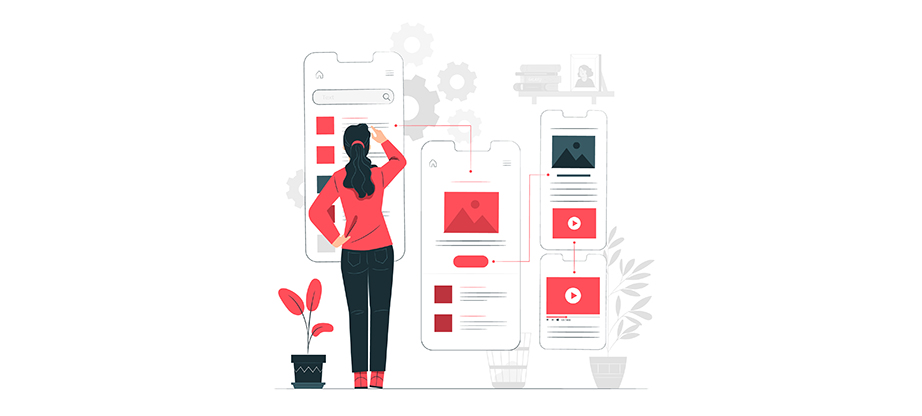What is Cloud Testing, and How to Get Started with it?
Are you struggling to get the right and authentic information about how to test mobile apps on the cloud ? Or are you the one looking for test automation on the cloud? You’re on the right platform to learn about end to end cloud testing. 
Quality at speed is what enterprises and small medium sized businesses are looking for while developing apps. Time To Market (TTM) becomes exceptionally essential in a rapidly changing business environment because you always wish to move ahead of the competition. Be it about releasing apps, addressing customers, or providing updates.
Whether large-scale enterprises or startups, all watch out for the tools and techniques that can accelerate their app testing process and development. When we talk about on-premise testing, you might agree that scalable infrastructure setup and continued and complicated maintenance could significantly escalate your burn rate.
Whether you’re a small Quality Assurance team with all members seated in the same ambience or a vast team spread across distinct locations. It is beneficial in solving the enormous remote testing challenges.
Cloud testing is majorly leveraged for simulating test automation on the cloud. In this guide, you’ll learn about what cloud testing has significant benefits and types. So stay tuned with us!
What is Cloud Testing?
Cloud testing is leveraged to access web apps for security, reliability, scalability, and performance. It is performed on a third-party cloud environment, enabling the needed test performance infrastructure.
The multiple types of cloud testing procedures enable you to test hardware and software without the constraints of geographical issues, limited budget, cost running high per test, multiple test cases, etc.
Here, this cloud testing tutorial will be beneficial for you to understand different aspects of cloud computing and leverage it to scale up your current test cases.
Why Choose Cloud Testing Automation Tools?
There are numerous advantages of app or web testing on the cloud. We have listed down the prime reasons for choosing cloud-based testing via test automation on the cloud. It might help you accelerate your app or web app testing. Here are some reasons why and how to go for cloud-based testing.
- Automation achieved by leveraging cloud-based testing tools helps maintain collaboration between team members and diverse teams. It becomes a piece of cake to check other’s activities, which is fruitful in averting ‘activity overlap’ between the team members.
- The software and hardware resources that offers access to cloud-based automation testing tools are accessible 24*7. It’ll improve the collaboration between geographically test teams and dispersed development because resources are available whenever they wish.
- Cloud-based automation testing is beneficial in vanishing environment-related delays. An environment that offers mobile test apps on the cloud can be provisioned efficiently and rapidly, destroying the requirement to share environments amongst teams.
- The total cost of ownership of test tools automation on the cloud is necessarily lesser than the in-house infrastructure. Most cloud-based testing providers leverage a model, ‘pay-as-you-go,’ which means you save costs when the testing tools are not in plan or usage to lower testing activity because of business reasons.
- Using a cloud-based testing infrastructure for cross-browser testing is a technically or economically viable option rather than strategies for an in-house testing infrastructure.
- Cloud testing automation tools are handy for examining performance glitches in a web app. It is feasible to scale the app to many concurrent customers that access the web app resources on the cloud.
- There are cases where testing on actual devices is not needed in mobile web testing. If we talk about cross-browser tests, you try to identify whether the logic flow and interface of the web app are working as per the tester’s expectations on distinct combinations of browsers.
- These testing platforms offer excellent scalability and reliability. You can also execute tests much faster because of the parallelism trait provided by cloud testing providers. Test coverage leads to improvement in multifold as massive testing is performed across distinct platforms, mobile simulators, browser combinations, and desktop devices.
Types of Cloud Testing
Cloud testing ensures that both the functional and non-functional testing requirements should be met. Let’s glance at different types of cloud testing while testing an application.
1. Functional Cloud-Based Testing
Functional cloud-based testing ensures that complete services are provided to the user who is paying for them. Also, make sure that the business needs should be fulfilled.
Here’s the list of some functional cloud-based tests:
- Interoperability Testing: An application should be flexible enough to work without technical glitches. It’s the same for distinct platforms but should seamlessly work when traveling from one cloud infrastructure to another.
- Acceptance Testing: Cloud-based solution is taken over by customers to guarantee that it should meet their expectations.
- System Verification Testing : Guarantees whether multiple modules are correctly functioning with one another or not, ensuring that their behavior is as per the expectations
2. Non-Functional Cloud-Based Testing
Non-functional cloud-based testing primarily focuses on web app tests, guaranteeing that their desires will meet.
Here’s is the list of some non-functional cloud-based testing:
- Performance Testing: Authentication of the response time should be done to guarantee that everything is complete despite having plenty of requests to be satisfied. Another critical factor that can evaluate performance is network latency. Also, workload balancing should be done when there’s a decrease in load by deactivating resources. Therefore, stress and load in the cloud guarantee apps that optimally perform with a rise/reduction in stress and load.
- Security Testing: Extremely essential to guarantee that the app’s security is up-to-date, plus the data present in the app is always secure. It benefits in minimizing and identifying security vulnerabilities in apps.
- Disaster Recovery Testing: The methodology guarantees that you do not face other critical results or lose data if there’s a cloud outage(or downtime).
- Multi-Tenancy Testing: Similar to stress testing, Multi-Tenancy testing guarantees that the security and performance of applications should be top-class. Also, ensure that everything is smooth when many concurrent customers are accessing the application simultaneously.
- Scalability Testing: Testing ensures that the offering can facilitate users with level-up or level-down facilities according to the requirement.
- Availability Testing: The app’s admin needs to guarantee restricted or no outages if the functions frequently change on the cloud provider’s side.
Sum Up
Efficient mobile apps testing on the cloud can help avoid glitches or bugs for the app’s betterment. Talking about today’s super-competitive space, companies need to use leading cloud-computing technologies to save on infrastructure costs.
Cloud-based testing is one procedure that can escalate the testing process plus lower the overhead costs of managing the in-house infrastructure.
For cloud-based cross-browser testing, pCloudy is the best platform because it enables you to test your website or app across 2000+ device browsers on public clouds. Also, companies can improve the quality of products and push their testing efforts. So, contemplate accordingly and go for the best cloud testing!

